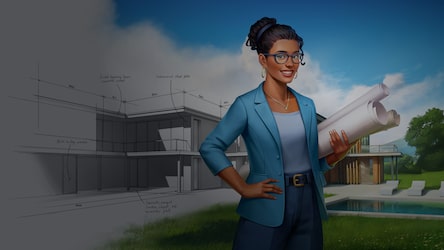Architect Advice on Utilizing Small Urban Spaces
Architect Advice on Utilizing Small Urban Spaces
Blog Article
Comprehending the Diverse Career Paths Available for Aspiring Architect
As an aspiring Architect, you have a world of occupation paths awaiting you. Each path uses distinct obstacles and chances to apply your imagination and technological knowledge. Whether you're attracted to standard style or the nuances of lasting layout, there's a particular niche that aligns with your rate of interests. Recognizing these diverse choices can shape your professional journey, yet which direction will you choose to explore initially?
Traditional Style: Creating Buildings and Structures
Standard architecture concentrates on creating structures and frameworks that blend capability with visual allure. As you explore this field, you'll value the intricate balance between form and function. You'll find out to attract motivation from historical styles, integrating components like proportion, products, and workmanship. Your layouts can show social heritage, showcasing neighborhood practices while fulfilling modern-day demands.
You'll establish skills in drafting, model-making, and website evaluation, enabling you to imagine and communicate your ideas effectively. Involving with customers, you'll need to understand their vision and translate it right into feasible designs.
Furthermore, constructing codes and sustainability methods are crucial in your work, ensuring your frameworks are secure and ecologically friendly. As you grow in your job, you'll discover chances in residential, business, and even repair tasks, each offering one-of-a-kind obstacles. Embracing traditional style leads the way for a satisfying occupation that pays homage to the past while shaping the future.
Urban Preparation: Shaping Areas and Public Spaces
As a hopeful Architect, you can play a vital role as a metropolitan planner, changing exactly how areas engage and operate. By utilizing community interaction approaches, you'll ensure that homeowners have a voice in forming their setting. Plus, incorporating lasting design concepts will assist develop spaces that not only fulfill today's needs however additionally safeguard the future.
Role of Urban Planners
While numerous might think of designers as the sole visionaries behind structures, city planners play a crucial duty in shaping the more comprehensive landscape of areas and public rooms. By teaming up with different stakeholders, you'll help develop parks, transportation systems, and residential locations that advertise social communication and ease of access. Your competence in spatial style and community dynamics permits you to picture future growth while preserving social heritage.
Neighborhood Involvement Methods
Efficient community involvement approaches are important for metropolitan planners to assure that the voices of citizens are heard and valued in the planning procedure. To foster purposeful dialogue, you must prioritize open forums and workshops where neighborhood members can reveal their ideas and concerns. Use studies and social networks to reach a wider audience, making sure diverse point of views are consisted of. Collaborating with neighborhood organizations can improve trust and assist in much deeper connections. It is essential to offer clear details about suggested projects and decision-making processes, permitting residents to feel enlightened and empowered. By actively integrating and paying attention responses, you'll create spaces that mirror the community's needs, eventually leading to more successful and lasting urban atmospheres. Accept openness and continuous dialogue for long lasting effect.
Sustainable Design Principles
When developing urban rooms, including sustainable design concepts is important for producing environments that grow both environmentally and socially. Consider incorporating eco-friendly spaces, like parks and yards, to enhance biodiversity and enhance air quality.
Creating with water preservation in mind is also crucial-- consider rainfall gardens and absorptive surfaces to take care of stormwater. Involving neighborhood participants during the preparation procedure guarantees that the rooms you create satisfy their needs and motivate social interaction. By embracing these principles, you'll add to lively, lasting metropolitan landscapes that benefit everybody.

Landscape Design: Producing Sustainable Exterior Atmospheres
As you explore landscape style, you'll uncover necessary style principles that produce stunning and functional outside spaces. Lasting practices play an important duty in making sure these environments grow while reducing ecological influence. Plus, you'll locate a variety of job chances that permit you to make a genuine difference in exactly how individuals communicate with nature.
Layout Principles in Landscape
Understanding style concepts in landscape architecture is crucial for producing sustainable outside settings that harmonize with nature. You'll need to consider components like equilibrium, percentage, and scale to assure your designs feel cohesive and inviting. Integrating native plants not just boosts biodiversity but likewise reduces water use, making your landscape resistant. Believe regarding the circulation of room and exactly how individuals interact with it; pathways and seating areas must welcome exploration and relaxation. Furthermore, pay focus to seasonal changes, developing with products that enhance the environments year-round (Architect). By focusing on sustainability and appearances, you can create outdoor rooms that improve the area and advertise health. Welcoming these principles will set a strong foundation for your profession in landscape architecture.
Lasting Practices Summary
Sustainable methods in landscape architecture not just concentrate on aesthetics however also prioritize ecological health and wellness and resource preservation. By incorporating native plants, you enhance biodiversity and lower the requirement for chemical fertilizers and pesticides. Executing reliable watering systems helps preserve water and reduces overflow, protecting neighboring environments. You can create spaces that advertise soil health, such as making use of organic materials and practicing permaculture principles. Additionally, including eco-friendly infrastructure, like rainfall gardens and permeable pavements, help in stormwater administration and lowers metropolitan warmth. You contribute to a healthier earth and supply spaces that foster area link when you create outdoor environments with sustainability in mind. Ultimately, Read Full Article these techniques guarantee your designs benefit both people and the atmosphere for years ahead.
Career Opportunities Expedition
With a solid foundation in lasting practices, landscape architecture provides a range of profession paths that enable you to make a purposeful effect on the environment. Urban planners commonly collaborate with landscape engineers to create green rooms in urban setups, improving city livability. If you're passionate concerning education and learning, take into consideration ending up being a landscape design instructor, motivating future generations.
Lasting Layout: Concentrating On Eco-Friendly Practices
As you explore your career in style, welcoming environmentally friendly methods can establish you apart in a competitive field. Sustainable design focuses on developing buildings that decrease environmental influence while improving occupant wellness. By including eco-friendly materials, energy-efficient systems, and lasting building techniques, you'll add to a greener future.
Beginning by gaining knowledge of eco-friendly qualifications like LEED or BREEAM, which can bolster your qualifications. Consider how all-natural light, ventilation, and thermal performance can maximize design. Team up with engineers and environmental experts to introduce options that decrease waste and conserve sources.
Do not forget the significance of area participation-- appealing local stakeholders can motivate styles that integrate with the atmosphere. As customers significantly prioritize sustainability, your experience in eco-friendly practices will certainly not just attract jobs yet additionally fulfill your passion for accountable design. Accept this essential facet of the occupation, and see your job grow.
Historic Conservation: Protecting and Restoring Cultural Heritage
While you start on your building trip, take into consideration the necessary role of historical conservation in preserving our social heritage. This area concentrates on the security and remediation of considerable structures, websites, and structures that inform the stories of our past. By participating in historical conservation, you'll assist safeguard the building legacy that forms neighborhood identity.
As a historic conservation Architect, you'll assess historic importance and examine the problem of structures. You'll function closely with chroniclers and conservationists to assure genuine repair techniques are employed. This job course permits you to blend creative thinking with research study, enabling you to develop remedies that appreciate original materials and workmanship.
Your work not only adds to sustainability by reusing existing buildings however also fosters a sense of pride within neighborhoods. Accepting this path will certainly assist you come to be a guardian of background, preserving the stories and visual appeals that enrich our lives.
Inside Design: Enhancing Indoor Spaces
Historic conservation and indoor style both share a dedication to enhancing the developed atmosphere, but they concentrate on various facets. While historical preservation highlights maintaining a structure's cultural and historical worth, indoor design nos in on enhancing interior spaces for performance and looks.
As an aspiring Architect, you'll locate that indoor style permits you to blend creativity with technical abilities. You'll make areas that not only look good but also advertise convenience and effectiveness. This area involves comprehending how light, shade, and materials connect within a space, affecting state of mind and usability.
You'll deal with various tasks, from domestic homes to industrial workplaces, ensuring that each environment satisfies the needs of its residents. By prioritizing individual experience, you can transform interiors right into useful and inspiring spaces, making a significant influence on exactly how people engage with their surroundings. Welcome the opportunity to enhance indoor settings and form the way individuals live and function.
Industrial Style: Combining Capability With Aesthetics
Commercial style plays a necessary duty in creating products that flawlessly mix looks with functionality, making sure that what you utilize everyday is not only aesthetically appealing yet likewise sensible. As an aspiring Architect, you could immerse on your own in this field, focusing on making everything from furniture to customer electronic devices. Your job includes understanding user demands, materials, and making processes, allowing you to create cutting-edge services that enhance day-to-day experiences.
In commercial design, you'll often work together with designers, manufacturers, and online marketers, guaranteeing that your layouts are not just lovely but also practical. This occupation path offers a vibrant setting where creative thinking fulfills practicality, making it a rewarding choice for engineers interested in shaping the items of tomorrow.
Regularly Asked Concerns
What Educational Certifications Do I Need to Become a Designer?
To become an architect, you'll need a professional degree in design, typically a Bachelor's or Master's. Furthermore, you'll have to finish a teaching fellowship and pass the Architect Registration Examination to practice legitimately.
Are There Accreditation Demands for Different Building Profession Paths?
Yes, there're qualification demands for different architectural courses. Architect. You'll need to pass examinations, total teaching fellowships, and sometimes seek specialized training, relying on your chosen focus, like landscape design, metropolitan design, or historic preservation
What Software Abilities Are Essential for Engineers Today?

Just How Can I Gain Practical Experience While Studying Architecture?
You can acquire functional experience by interning at architectural visit site companies, taking part in design competitions, offering for neighborhood jobs, or collaborating with classmates on real-world jobs. These chances enhance your skills and build useful connections in the sector.
What Job Opportunities Exist Outside Traditional Design Firms?
You can discover various work possibilities outside traditional style companies, like city preparation, interior layout, landscape style, construction monitoring, actual estate growth, and even roles in sustainability consulting. Each offers distinct difficulties and incentives.
Whether you're attracted to conventional style or the nuances of lasting design, there's a particular niche that straightens with your interests.When making city areas, integrating lasting style principles is important for creating atmospheres that grow both ecologically and socially.As you check out landscape architecture, you'll find necessary style principles that produce useful and gorgeous exterior spaces.Comprehending design principles in landscape style is essential for developing sustainable exterior atmospheres that balance with nature.In industrial design, you'll often team up with marketers, designers, and makers, ensuring that your layouts are not only stunning yet likewise possible.
Report this page